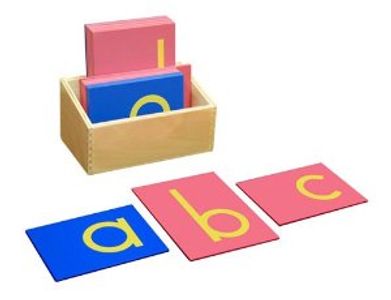Areas of the Classroom
Practical Life
The practical life section is the precursor to language because it helps children work their OCCI: order, concentration, coordination, and independence. These materials help the child learn and feel how to be independent, encourage self-discipline and impulse control, build self-confidence, and help the child internalize the work cycle.
The practical life curriculum consists of 5 different areas:
- care of self (washing hands, brushing teeth, and dressing)
- care of the environment (cleaning, dusting, folding, and scrubbing of floor, table or chair)
- control of movement (small motor activities to help the child get ready to hold a pencil in the pincer grip such as spooning, tweezing, and food prep)
- large motor skills (activities that exercise the body, encourage balance, isolates body movements, and help develop large motor control and coordination)
- grace and courtesy (activities that help the children learn about appropriate interactions with other people by practicing social scripts, being polite and respectful to others, and learning how to walk and sit properly)

Sensorial
Sensorial is considered the precursor to Math, it provides the child with the foundation for math concepts. It is the area where the children get hands-on experience with basic mathematical concepts using materials that stimulate their senses. Sensorial materials are organized around the five senses as well as nine qualities: size or dimension, shape, color, texture, temperature, weight, taste, smell, and sound so that these aims are accomplished. When children’s senses are stimulated it helps them to develop cognitively, linguistically, socially and emotionally, physically, and creatively.

Language
All of the works in a Montessori classroom are readable and preparing the children to learn to read. They go from easiest to more difficult from left to right, and top to bottom on the shelves. The trays in which each of the works is on are also readable and go form left to right. This helps start training the children’s’ eyes for reading (left to right, top to bottom).
The Montessori classroom is a whole language classroom because the teacher’s main focus is on children becoming readers and writers and their emergent abilities, not on what is being taught.

Math
To help the children learn the quantities associated with each number Montessori created materials in which the children were able to manipulate concrete materials. She created a math curriculum with materials that allowed the children to work from concrete to abstract ideas. She believed that children need concrete sensorial experiences to aid the mind in the process of absorption, - “The hand is the instrument of the mind”. One of Montessori’s goals in creating these materials was to provide the children with the means for developing conceptual and problem solving skills.
The math curriculum is broken down into six main parts:
- Numeration 1 to 10
- Introduction to the decimal system (Each of the numbers is assigned a color, the ones are green, the tens are blue, the hundreds are red, and the thousands are green)
- Numeration to 1000
- Operations with the decimal system
- Memorization where the child begins to work on the quick retrieval of their basic math skills
- Fractions

Cultural
Cultural is a child’s window to the world. The Cultural curriculum combines many subjects, which connect to child to their place in the universe. The Cultural subjects include:
- Science
- History
- Social Studies
- Geography

Peace
The Peace shelf offers
- meditative works that help to cultivate a sense of peace within themselves
- social emotional works and works to help children with conflict resolution
- works that develop a child’s sense of wonder (for the natural world)

Art
The art shelf offers children opportunities that are open-ended so that the child is able to use their creativity. Young children feel a sense of emotional satisfaction when they are making art because they are able to decide what they want to make and what materials they will use. For some children this is the first time they are able to make their own choices independently. They are able to express what they are thinking and feeling through the art that they make, which could result in a boost in their confidence.
Children are developing both large and fine motor skills when they are making art as well as their hand-eye coordination. They are developing control of their large muscles when they are painting at an easel and their small muscles when they are doing activities such as cutting with scissors, drawing with crayons, or modeling with clay.

Cozy Area/Library
The cozy area/library offers children a quiet, peaceful place where they can read or look at books independently or with a friend. Both nonfiction and fiction books, as well as books of all genres are represented in the library and around the classroom.

Dramatic Play/Blocks
The dramatic play and blocks areas:
- Teach self regulation
- Encourage language development
- Teach conflict resolution
- Support math and literacy
- Help relieve emotional tension
- Help children feel empowered